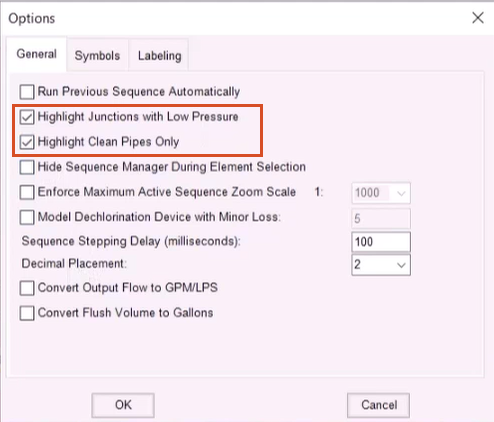& Construction

Integrated BIM tools, including Revit, AutoCAD, and Civil 3D
& Manufacturing

Professional CAD/CAM tools built on Inventor and AutoCAD
Any referenced datasets can be downloaded from "Module downloads" in the module overview.
Required for course completion
When viewing the output results of a UDF simulation in InfoWater Pro, there are several ways to customize the appearance of map elements.
For example, in the following image, pipes in the currently active sequence are highlighted in orange, and previously flushed pipes are highlighted in blue. Valves that need to be open or closed are circled in green and red, respectively, and hydrants that need to be open are highlighted in green.
Additionally, pipes are annotated with velocities, and hydrants are labeled with their respective residual pressures.
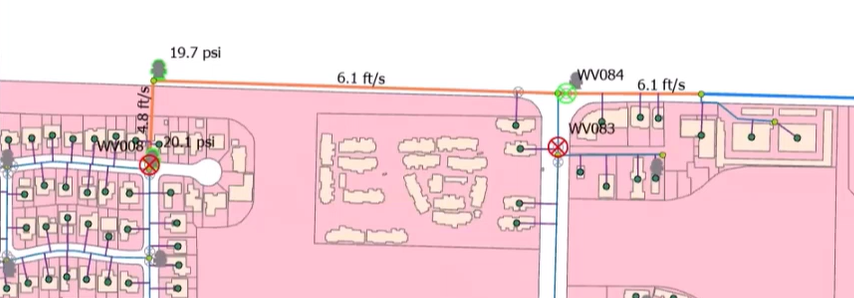
From the Model Explorer, UDF tab, there are several options for navigating results and notifying customers.
To update the map and visible data with a different sequence:

To zoom to the active sequence on the map:

To view a table of report items from a sequence:

In the Flush Zone Statistics dialog box, view report information about the current flush zone, including the number of sequences, total length of pipe flushed, flush volume, number of hydrants, and the number of valve operations involved.
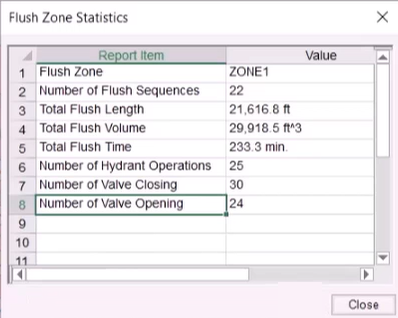
To locate properties within the currently active layer that will be directly or indirectly impacted by a flushing operation:


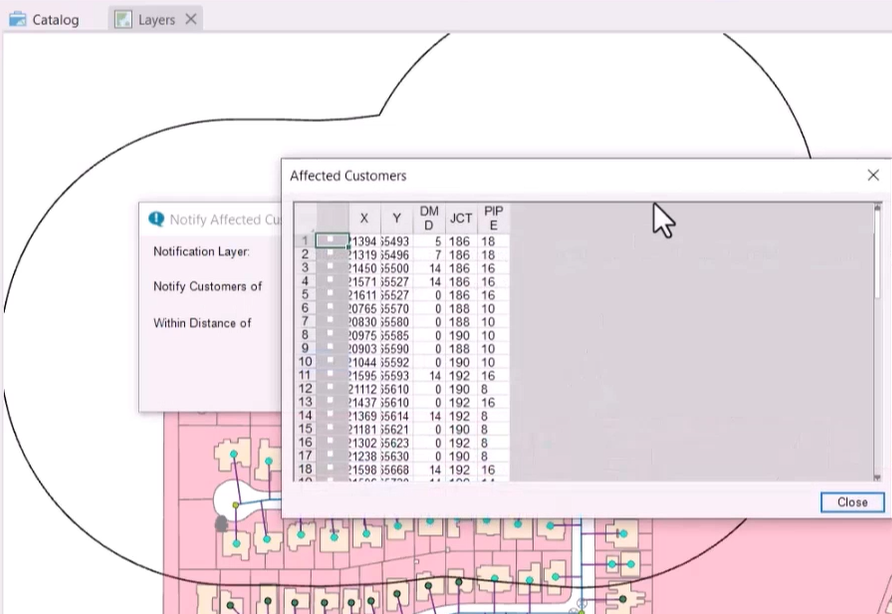
Additional UDF results options are available from the InfoWater Pro ribbon, UDF panel.
To obtain a printable field journal:
The field journal, also called a “flush book”, contains a series of graphical maps and technical data sheets to guide field personnel in implementing developed UDF sequences.
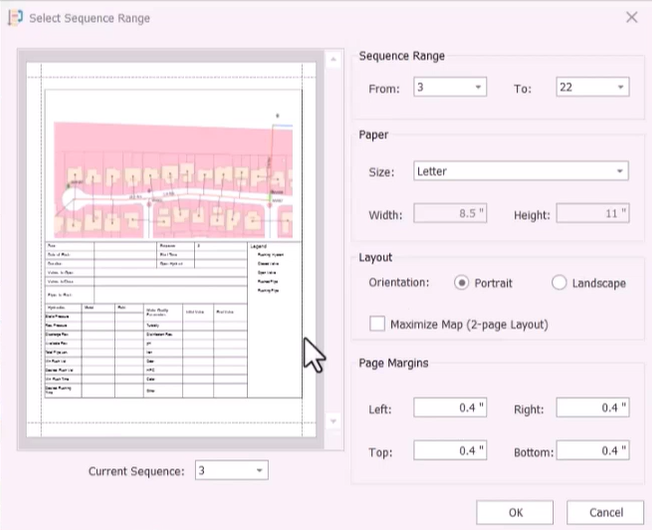
To highlight each zone with a custom color:
To customize the appearance of certain map elements:
